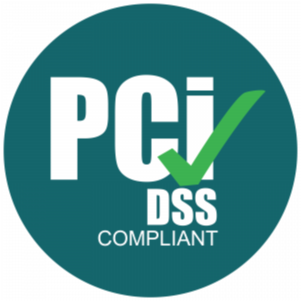Quick Summary
- Employee experience refers to the sum of all interactions an employee has within an organization, influencing their engagement, productivity, and retention.
- Disengaged employees and turnover cost S&P 500 companies $228M–$355M annually in lost productivity.
- EX initiatives improve retention (up to 34%), engagement (by 25%), and profitability (via increased revenue per employee).
- ROI for EX is measured via retention, productivity, engagement, and absenteeism metrics.
- Case studies (e.g., Adobe, Accenture) show structured EX programs can cut voluntary turnover by 34% and save 80,000+ hours annually.
The focus on employee experience has shifted from being a “nice-to-have” benefit to a strategic priority tied directly to business performance. Organizations now recognize that investing in EX delivers tangible results affecting profitability, customer satisfaction, and innovation.
This article focuses on measuring employee experience through proven metrics and methodologies. You will learn how to demonstrate the employee experience business impact clearly and how to leverage tools that support employee experience management to build a convincing case for investment.
The Financial Impact of Poor Employee Experience
When employees feel disengaged or decide to leave, businesses face significant and often underestimated costs.
Turnover expenses extend beyond recruitment and onboarding to include lost productivity as new hires ramp up, knowledge gaps, and disruption to team dynamics. Disengaged employees contribute less not only in terms of output but also creativity and collaboration, which stifles innovation and slows problem-solving capabilities.
This decline in employee morale frequently translates into a poorer customer experience, as dissatisfied employees are less motivated to provide exceptional service or go the extra mile.
Research underscores the magnitude of these risks. For instance, McKinsey estimates that employee disengagement and attrition could cost a median-sized S&P 500 company between $228 million and $355 million annually in lost productivity alone. Moreover, hidden costs such as increased absenteeism, the time and resources spent training replacements, and operational downtime further compound the financial impact.
These ripple effects demonstrate that poor employee experience affects every level of an organization’s performance. As a result, investing in employee experience is not just a strategic advantage—it is essential for sustaining long-term business success. Prioritizing EX fosters engagement, reduces costly turnover, and drives both innovation and customer satisfaction.
Key ROI Metrics for Employee Experience Initiatives
Measuring the success of EX initiatives involves tracking a variety of metrics that capture both employee well-being and business outcomes. For example:
- Retention rate shows how effectively an organization retains its talent over time.
- Employee productivity, often expressed as output per employee, highlights improvements in efficiency.
- Engagement and satisfaction scores provide insight into the overall morale and commitment of the workforce.
- Absenteeism and presenteeism rates reveal how health and motivation impact attendance and focus on the job.
- Revenue per employee links the effectiveness of the workforce directly to financial results.
- Customer satisfaction and loyalty scores reflect the positive effects of a motivated and engaged staff on client experience.
The table below summarizes the relationship between these EX metrics and their business impact:
| Metric | Business Impact |
|---|---|
| Retention Rate | Reduces hiring and training costs |
| Employee Productivity | Increases operational efficiency |
| Engagement Scores | Boosts innovation and discretionary effort |
| Absenteeism | Minimizes lost workdays |
| Revenue per Employee | Improves profitability |
| Customer Satisfaction | Drives sales and repeat business |
Frameworks for Calculating Employee Experience ROI
Calculating the return on investment (ROI) for EX initiatives, or your EX investment return, involves a systematic and thoughtful approach to ensure that resources are allocated effectively. Here’s how you can break it down:
- Step 1: Begin by defining the total cost of the initiative. This should include all direct and indirect expenses such as technology purchases or subscriptions, employee training programs, communication campaigns, and any consulting or implementation fees. Being thorough here ensures no hidden costs are overlooked.
- Step 2: Next, project measurable outcomes that your initiative aims to achieve. This can include improvements in employee retention rates, boosts in productivity, reductions in absenteeism, or enhancements in customer satisfaction. Clearly defining these helps link EX efforts to business priorities.
- Step 3: Assign financial values to these projected benefits by using internal performance data or leveraging relevant industry benchmarks and studies. For example, calculate the cost savings from reduced turnover or revenue gains from increased productivity.
- Step 4: Calculate the net return by subtracting the total initiative cost from the sum of projected financial benefits. This gives a straightforward estimate of the value created by the EX initiative.
- Step 5: Finally, adjust the calculation for potential risks and the time value of money, which accounts for uncertainties and the fact that future benefits are worth less than immediate ones. This adjustment ensures a more realistic and conservative estimate of ROI.
This structured framework offers a transparent and repeatable method to connect employee experience programs directly to tangible financial outcomes. It empowers HR leaders to justify investments with confidence and make data-driven decisions that support long-term business growth.
Case Studies: Organizations with Proven EX ROI
Investing in employee experience (EX) is more than a feel-good initiative—it’s a strategic move that drives measurable business outcomes. The following case studies highlight how organizations across industries have implemented EX-focused initiatives, overcome challenges, and achieved significant returns on investment.
Case Study 1: Accenture’s Onboarding Overhaul
- Initiative Type: Onboarding
- Measurable Business Outcomes: Accenture’s revamped onboarding reduced new hire turnover from 25% to 15% in one year, boosted engagement by 20%, and improved productivity by 30%.
- Challenges Faced and Overcome: High turnover stemmed from disconnected new hires. A structured program with mentorship and check-ins faced initial resistance but gained traction with leadership support.
| Metric | Before | After |
|---|---|---|
| Turnover Rate | 25% | 15% |
| Engagement Score | Baseline | +25% |
| Employee Satisfaction | 60% | 85% |
Case Study 2: Adobe’s Check-Ins
- Initiative Type: Feedback
- Measurable Business Outcomes: 34% reduction in voluntary turnover rates, 50% reduction in involuntary departures, 80,000+ hours saved annually by managers, increased employee engagement scores
- Challenges Faced and Overcome: Overcoming resistance to change from traditional performance review systems, ensuring consistent implementation across global teams, training managers to provide timely and constructive feedback
| Metric | Before | After |
|---|---|---|
| Voluntary Turnover Rate | Baseline | -34% |
| Involuntary Turnover Rate | Baseline | -50% |
| Time Spent on Reviews | Baseline | 80,000+ hours saved |
Technology’s Role in Measuring Employee Experience Impact
Modern tools have become essential in enhancing employee experience analytics. For example, platforms such as SogoEXstreamline and centralize data collection, making it easier for HR teams to monitor engagement trends and predict future workforce behaviors.
These systems often integrate seamlessly with advanced business intelligence tools, delivering actionable insights that support smarter, data-driven decision-making. They provide customizable dashboards and real-time reporting, enabling HR leaders to respond swiftly to emerging issues and tailor interventions more effectively.
Moreover, robust privacy and compliance features are embedded within these technologies, ensuring that sensitive employee information remains secure and confidential. By safeguarding data and promoting transparency, these tools help build trust throughout the organization, ultimately fostering a more positive and informed employee experience strategy that aligns with evolving regulatory requirements and ethical standards.
Building a Compelling Business Case for EX Investment
Building a compelling employee satisfaction business case is essential to secure leadership support and resources. A well-structured case clearly demonstrates how investing in employee experience drives measurable business outcomes.
- Step 1: Executive Summary: Start with a clear overview that highlights the key problem and the opportunity your EX initiative addresses.
- Step 2: Cost and Benefit Projections: Provide detailed financial estimates, showing both the costs involved and the expected benefits to demonstrate ROI.
- Step 3: Timeline and Pilot Programs: Outline a realistic schedule, including pilot phases to test assumptions and collect data before scaling.
- Step 4: Stakeholder-Specific Messaging: Customize your communication to address the unique concerns and priorities of different stakeholders, ensuring relevance and engagement.
- Step 5: Presentation Techniques: Use visual aids like charts and graphs to present data clearly, and share compelling employee stories to make the case memorable.
Implementation Roadmap: From Metrics to Action
Successfully implementing an employee experience (EX) program requires a strategic and methodical approach. To guide your journey, consider these key stages in your EX implementation roadmap:
- Baseline Assessment: Begin by conducting a thorough evaluation of existing employee experience and performance. This helps identify strengths, weaknesses, and areas needing improvement, setting a clear starting point for your efforts.
- Define Clear Metrics: Establish measurable goals aligned closely with your broader business objectives. These metrics will serve as benchmarks to track progress and demonstrate the impact of your EX initiatives.
- Continuous Tracking and Optimization: Implement processes to regularly monitor these metrics using real-time data and ongoing employee feedback. Frequent reviews enable early identification of challenges and allow for timely adjustments.
- Scaling Successful Initiatives: Once pilot programs or smaller initiatives demonstrate positive outcomes, plan to expand them across the organization to maximize their reach and effectiveness.
- Communication and Stakeholder Engagement: Throughout the process, maintain strong communication channels and actively engage key stakeholders. This ensures alignment, fosters buy-in, and sustains momentum for long-term success.
Future Trends in Employee Experience Valuation (2025 and Beyond)
As employee experience (EX) continues to gain strategic importance, its valuation methods are evolving to keep pace with new technologies and stakeholder demands. Looking ahead to 2025 and beyond, organizations will need to consider several key trends shaping EX valuation:
- AI in Predictive EX Modeling: Artificial intelligence will play a crucial role in forecasting employee behaviors and engagement, enabling more proactive and personalized EX strategies.
- Emerging Metrics: New measures like employee lifetime value will help quantify the long-term financial contributions employees bring to the organization beyond traditional KPIs.
- Evolving Stakeholder Expectations: Boards and investors increasingly expect detailed insights into how EX influences business resilience, innovation, and growth, pushing companies to deepen their analysis.
- Recognition of Intangible Value: Beyond hard numbers, factors such as innovation capacity, organizational agility, and brand trust will be acknowledged as vital elements of workplace experience value and EX’s overall impact.
Link Highlight: Read our full blog on EX trends in 2025 https://www.sogolytics.com/blog/employee-experience-trends/
Conclusion and Next Steps
In summary, employee experience (EX) delivers measurable ROI by directly influencing key business outcomes such as productivity, retention, and customer satisfaction. Clear frameworks exist to help organizations quantify this impact, linking EX initiatives to tangible financial results through structured metrics and analysis. Ultimately, combining the right technology with a well-defined strategy enables companies to unlock long-term value and build a resilient, engaged workforce.
To get started immediately, consider launching a pilot EX initiative to test approaches and gather data on their effectiveness. This hands-on experience will provide valuable insights and build momentum for broader implementation.
Additionally, you can schedule a demo with Sogolytics to learn how to streamline data collection, enhance predictive modeling, and support informed decision-making. Taking these first steps will position your organization to confidently measure, optimize, and scale employee experience efforts, ultimately driving sustained business success.
Make a Winning Business Case for EX: FAQs
What’s the ROI of improving employee experience in 2025?
Improving EX in 2025 delivers strong ROI by boosting productivity, reducing turnover, and enhancing customer satisfaction. Advanced analytics and AI enable precise measurement, helping organizations link EX investments to tangible financial gains such as higher revenue per employee and lower recruitment costs.
How do I measure the impact of EX on business revenue?
Measure EX impact by tracking metrics like employee productivity, retention rates, and engagement scores alongside revenue per employee. Use financial modeling to connect improvements in these areas with revenue growth, considering factors like reduced absenteeism and increased customer loyalty that result from a motivated workforce.
Is employee satisfaction really linked to profitability?
Yes, numerous studies confirm that higher employee satisfaction correlates with increased profitability. Satisfied employees are more productive, engaged, and less likely to leave, which reduces costs and drives better customer experiences—ultimately improving financial performance.
Can small companies calculate employee experience ROI?
Absolutely. Small companies can use simplified frameworks focusing on key metrics like turnover reduction and productivity improvements. Even basic data collection and cost-benefit analysis can reveal how EX investments impact their bottom line, enabling smarter resource allocation.
What’s a simple framework for justifying EX investment to leadership?
Start with an executive summary outlining the problem and opportunity. Present cost and benefit projections, include a pilot timeline, tailor messaging to stakeholders, and use visual data plus employee stories. This approach connects EX to business goals and builds a convincing case for investment.














